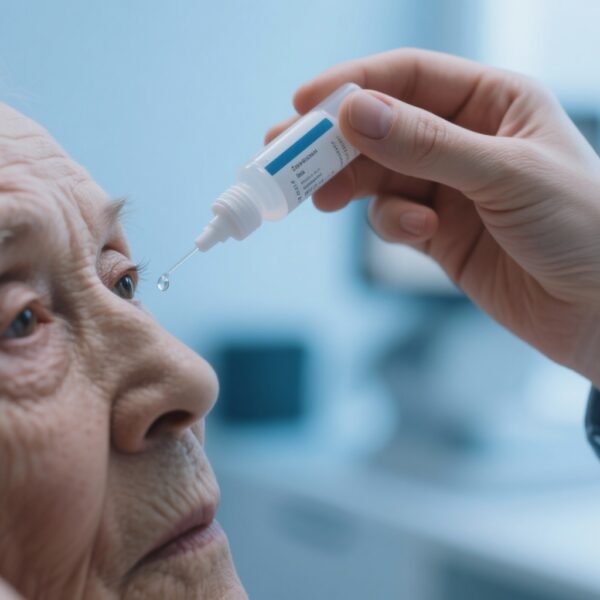Patient Information
Susac syndrome (SuS) is a rare autoimmune microangiopathy principally affecting young adults, typically characterized by the clinical triad of encephalopathy, branch retinal artery occlusion (BRAO), and sensorineural hearing loss. This case series includes 54 patients (median age at diagnosis 36.5 years, interquartile range 30-46) managed at two academic neurology centers in the United States. Female patients represented 61% of the cohort. All patients met criteria of either definite or probable Susac syndrome, presenting with combinations of neurological, audiological, and ophthalmological manifestations consistent with the classic triad.
Diagnosis
Diagnosis in this cohort was based on clinical symptomatology supported by ancillary investigations including brain MRI demonstrating characteristic multifocal lesions involving the corpus callosum, fluorescein angiography confirming branch retinal artery occlusions, and audiometry diagnosing sensorineural hearing loss. These diagnostic modalities remain pivotal in distinguishing SuS from mimics and confirming the diagnosis. Patients were categorized under definite or probable Susac syndrome based on established consensus criteria.
Differential Diagnosis
The differential diagnosis for Susac syndrome includes multiple sclerosis, acute disseminated encephalomyelitis, systemic lupus erythematosus-related central nervous system vasculitis, and primary angiitis of the central nervous system. These conditions share overlapping clinical and imaging features but differ in pathophysiology and treatment. Rigorous evaluation including serologic testing, imaging patterns, and clinical course helped exclude these alternatives in the cohort.
Treatment and Management
Maintenance immunotherapy was employed to prevent relapses and progression of disability. Immunotherapies utilized varied widely, reflecting the absence of standardized treatment guidelines and the refractory nature of some cases. The commonly used agents included mycophenolate mofetil, intravenous immunoglobulin (IVIG) in doses categorized as low/intermediate versus high, cyclophosphamide, rituximab, azathioprine, and methotrexate. Less frequently employed treatments were infliximab, tocilizumab, and maintenance plasma exchange.
The median treatment durations ranged from approximately 0.5 to 5.5 years depending on the agent. Combination regimens and escalation to more aggressive immunosuppression were noted particularly in refractory patients. Treatment decisions were based on clinical judgment, relapse occurrence, and tolerability.
Outcome and Prognosis
Relapse rates and annualized relapse rates (ARR) were calculated for each treatment modality. Notably, high-dose IVIG was associated with the lowest relapse rate of 11.7% and ARR of 0, indicating superior efficacy compared to low/intermediate dose IVIG which had a relapse rate of 42.3% and ARR of 0.1. Mycophenolate mofetil and rituximab showed relapse rates of 40% and 38% respectively, but both had an ARR of 0, suggesting reduced frequency or severity of relapses.
Cyclophosphamide had a relapse rate of 36.3% with an ARR of 0. Azathioprine and methotrexate showed higher relapse rates of 60% and 66.6% respectively with ARRs of 0.1. Agents used in single patients, including infliximab, maintenance plasma exchange, and tocilizumab, demonstrated no relapses during treatment periods, although conclusions are limited due to small numbers.
Some patients required multiple and aggressive immunotherapies indicating the variability in response and disease severity. Long-term prognosis remains guarded especially in the context of relapses causing irreversible neurological and sensory deficits.
Discussion
This large two-center case series contributes significantly to the limited literature on maintenance immunotherapy outcomes in Susac syndrome. The findings underscore the heterogeneous response patterns across immunotherapies with high-dose IVIG appearing most effective in lowering relapse risk. The study highlights the importance of individualized treatment approaches including consideration for combination regimens in refractory cases.
Given the rarity of SuS, prospective trials are challenging; hence, large multicenter cohorts and retrospective analyses remain essential for informing clinical practice. The variable relapse frequencies and need for escalating therapies emphasize the necessity of early diagnosis and aggressive immunomodulation to minimize irreversible sequelae.
Clinicians should be aware of the spectrum of immunotherapies available and tailor treatment plans according to relapse history and individual patient tolerability. High-dose IVIG should be considered a cornerstone for maintenance therapy based on relapse reduction. Additional targeted therapies such as rituximab and cyclophosphamide have a role in refractory cases.
Future directions include validating biomarkers of disease activity, optimizing immunotherapy sequencing, and multicenter registries to better characterize long-term outcomes. This study provides valuable evidence supporting maintenance immunotherapy in preserving neurological function and improving quality of life in patients with Susac syndrome.
References
Moheb N, Tajfirouz DA, Chodnicki KD, McKeon A, Rattanathamsakul N, Salman AR, Rettenmaier LA, Varma-Doyle A, Chwalisz BK, Chen JJ. Outcomes of Maintenance Immunotherapy in a Cohort of Patients With Susac Syndrome: A 2-Center Large Case Series. Neurol Clin Pract. 2025 Dec;15(6):e200544. doi:10.1212/CPJ.0000000000200544. Epub 2025 Oct 2. PMID: 41070138; PMCID: PMC12507439.



